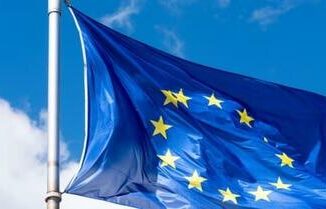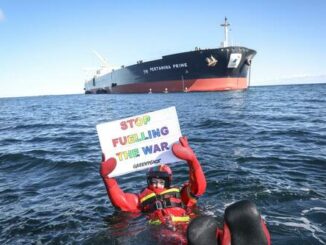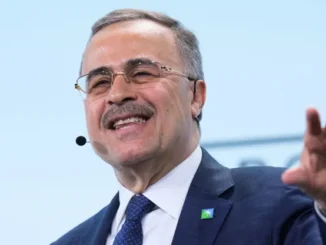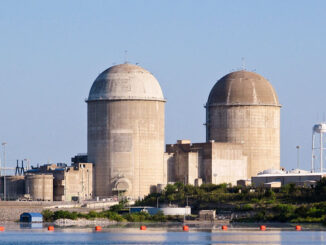
It is 15,000 kilometres from Kyiv to Korumburra, but the conflict between Ukraine and Russia will have economic effects across Australia.
The most immediate effect will be at the petrol pump. The national average unleaded petrol price rose by 2.2 cents to a record 179.1 cents a litre last week, according to the Australian Institute of Petroleum.
For the first time, the average Australian household is spending more than $250 a week on fuel, up $67 over the past year.
“Following Russia’s incursion into the two breakaway regions in Ukraine, Brent oil futures traded just above $US99 a barrel,” CommSec commodities analyst Vivek Dhar reported before today’s full-scale military operations.
“There’s still considerable risk that oil prices may surge above $US100 a barrel if Russia’s invasion in Ukraine continues to escalate.”
He was right. Soon after Russian forces started attacking Ukraine in earnest the price of Brent jumped a further 5.6 per cent to $US102.27 a barrel.
The price for crude oil has been a lot higher in the past, but the Australian dollar is currently much weaker than it was the last time oil was this expensive.
When oil was last close to $US100 a barrel, in September 2014, one Australian dollar was worth around 90 US cents. Currently, one Australian dollar will buy you just 72 US cents.
Mr Dhar noted that oil markets are “particularly vulnerable” at the moment for two reasons.
Firstly, global oil stockpiles are at seven-year lows after demand dropped through the floor during the pandemic.
On top of that, there has been “disappointing supply growth” by the biggest oil-supplying nations represented by OPEC, the Organization of the Petroleum Exporting Countries.
That means it is unlikely they have much spare capacity to expand production rapidly to correct a shortfall in supply.
Gas leak
But the bigger impact could be in gas. The world needs it and Russia has it.
“Gas storage levels in Europe are around 31 per cent of capacity, well below the five-year average of 43 per cent for this time of year,” Mr Dhar wrote, adding that this showed the “tightness” of the issue on the continent.
Russia is an energy powerhouse: the world’s second-largest exporter of both crude oil and refined petroleum, the third-largest exporter of coal and fourth in natural gas.
Australia vies with Qatar to be the world’s biggest exporter of natural gas. Prices for Australia’s gas are “likely to remain elevated” due to the conflict.
Most of the nation’s gas is exported already under long-term contracts that set the price many years ago, meaning there is not as much scope for Australia to capitalise on the boom.
Replacing what is a key source of heat and power in Europe will be difficult.
For example, gas keeps half of Germany’s homes warm and is used to produce 15 per cent of the nation’s electricity. A pipeline of gas from Russia provides about a third of Germany’s gas needs.
Given Qatar is much closer than Australia, it will be cheaper to ship liquefied natural gas from there if the need arises, although if those shipments are diverted from Asian customers, then Australia may be asked to fill shortages there.
Pain extends
There is more than just power at stake.
Michael Every, head of financial markets research Asia-Pacific for RaboBank, told The Business the immense size of Russia made a widespread impact of sanctions – stopping trade – inevitable and significant.
“Russia’s primary exports are energy, which we all need. Food, which we all need. Fertilisers, which we all need, and key industrial metals like palladium and nickel, which we need,” he observed.



























